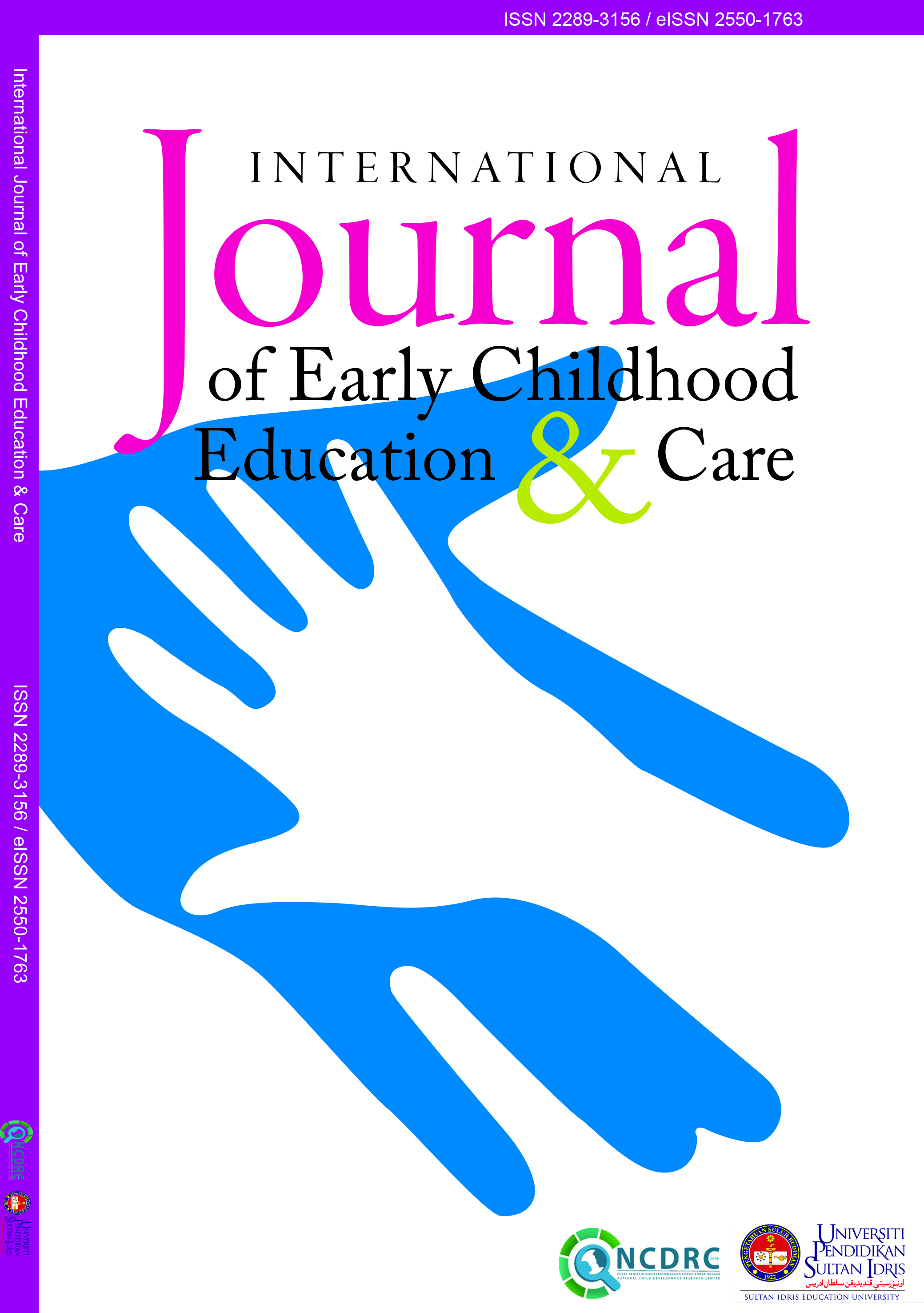The effects of free rotate gestures in multi-touch screen design on childrens’ achievement in learning shape for pre-school children
DOI:
https://doi.org/10.37134/saecj.vol6.3.2017Keywords:
Multi-touch Gestures, Touch Screen, Free Rotate Gestures, Pre-School ChildrenAbstract
The purpose of this study is to investigate the effects of free rotate gesture used in multi-touch screen design on pre-school children’s achievement in learning shape. Multi-touch screen design enables users to perform multiple finger gestures such as free rotate, pinch and spread. The gestures are often selected because it is similar to real-life movements. Free rotate gesture enables users to rotate the objects on screen which can enhance the interaction between users and virtual objects. As the actions are natural, spontaneous and easy to learn, it has been widely used in learning purposes. Therefore, it is important to investigate how these free rotate gesture affect children’s achievement in learning shape as the children can interact with the virtual shape naturally. The study involves 20 childrens aged 5 to 6 years old from National Children Development Research Centre (NCDRC). The samples had been given a pre-test and post-test about shapes before and after they used the mobile application of Learning Shape which include the free rotate gestures. Then the pre-test dan post-test score had been analyzed by using Paired Samples T-Test in SPSS by comparing its means. The results indicated that the post-test mean is higher than the pre-test mean with significant value is less than .05. It shows that the free rotate gestures can effects children’s achievement in learning shape. The study also observes children’s interaction while using the mobile application. The results shows that the children are happy and can understand the topic more easily because they can interact with the virtual shape naturally. As for conclusion, the free rotate gestures is an important factor that should be be taken into consideration when designing mobile applications for pre-school children.
Downloads
References
Naismith, L., Sharples, M., Vavoula, G., & Lonsdale, P. (2004). Literature review in mobile technologies and learning.
Celentano, A., & Minuto, A. (2008, September). Gestures, Shapes and Multitouch Interaction. In Database and Expert Systems Application, 2008. DEXA'08. 19th International Workshop on (pp. 137-141). IEEE.
Hamza, Z. (2014). Study of touch gesture performance by four and five year-old children: Point-and-touch, dragand-drop, zoom-in and zoom-out, and rotate (Doctoral dissertation, Minnesota State University, Mankato).
Yu, X., Zhang, M., Xue, Y., & Zhu, Z. (2010, June). An exploration of developing multi-touch virtual learning tools for young children. In Education Technology and Computer (ICETC), 2010 2nd International Conference on (Vol. 3, pp. V3-4). IEEE.
Wu, M., & Balakrishnan, R. (2003, November). Multi-finger and whole hand gestural interaction techniques for multi-user tabletop displays. In Proceedings of the 16th annual ACM symposium on User interface software and technology (pp. 193-202). ACM.
Clarke, B., & Svanaes, S. (2014). An updated literature review on the use of tablets in education. Tablets for Schools. UK: Family Kids & Youth.
Agostinho, S., Tindall-Ford, S., Ginns, P., Howard, S. J., Leahy, W., & Paas, F. (2015). Giving learning a helping hand: finger tracing of temperature graphs on an iPad. Educational Psychology Review, 27(3), 427-443.
Dubé, A. K., & McEwen, R. N. (2015). Do gestures matter? The implications of using touchscreen devices in mathematics instruction. Learning and Instruction, 40, 89-98
Parnell, W. A., & Bartlett, J. (2012). iDocument: How smartphones and tablets are changing documentation in preschool and primary classrooms. Young Children
Omar, A. (2017). Permainan Mudah Alih dan Kanak-kanak. IDEALOGY, 2(1), 137-149.
Hoggan, E., Williamson, J., Oulasvirta, A., Nacenta, M., Kristensson, P. O., & Lehtiö, A. (2013, April). Multitouch rotation gestures: Performance and ergonomics. In Proceedings of the SIGCHI Conference on Human Factors in Computing Systems (pp. 3047-3050). ACM.
Nimbarte, M. (2011). Multi-touch screen interfaces and gestures analysis: A study. Advanced Computing, 2(6), 113.
Bertolo, D., Nigay, L., Pelurson, S., & Vivian, R. (2015, October). Exploratory experimentation of three techniques for rotating a 3D scene by primary school students. In Proceedings of the 27th Conference on l'Interaction Homme-Machine (p. 43). ACM.
Dauksas, L., & White, J. (2014). Discovering Shapes and Space in Preschool. Teaching Young Children, 7(4), 22-26.
Shape and Space, Accessed from
https://www.earlychildhoodireland.ie/shape-and-space/
[Accessed April, 20, 2017]
Bedford, R., de Urabain, I. R. S., Cheung, C. H., Karmiloff-Smith, A., & Smith, T. J. (2016). Toddlers’ fine motor milestone achievement is associated with early touchscreen scrolling. Frontiers in psychology, 7.





